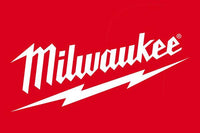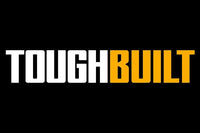Daily order cutoff at 2pm

How Important is Tool Control and Accountability in the Aviation Industry?
Modern aviation is one of the safest and most secure forms of transport. In part, this is down to the rigorous safety and security checks that are carried out pre-flight. But what most people aren’t aware of, is the extraordinary lengths which airlines go to. There are many measures and directives in place to ensure that the aircraft are as safe as possible. Tool control in aviation starts with the most simple things. For example, making sure that no Foreign Object Debris (FOD) including tools, are left in any part of the machinery following routine servicing.
After all, prevention is ALWAYS better than cure.

What are the CAA and FAA tool control regulations?
Most UK airlines have a Tool Control & Accountability policy in place, as outlined by The Civil Aviation Authority. This comes under policy 145-2 Equipment, Tools and Materials – OTAR Part 145.109. And in the U.S under The Federal Aviation Administrator. AC No: 150/5380-5B. The policies are understandably very similar, but in the U.K the CAA specifies the following:
Tools and Equipment
“(a) All tools and equipment that are required to be controlled in terms of servicing or calibration under being necessary to measure specified dimensions and torque figures etc should be identified and listed in a control register. Including any personal tools and equipment that the organization agrees can be used.
Tool Control
(b) The control of such tools and equipment requires that the organization has a procedure to inspect/service. And, where appropriate, calibrate such items regularly and indicate to users that the item is within any inspection or service or calibration time-limit.
Tool Labelling
(c) A clear system of labeling all tooling, equipment, and test equipment is, therefore, necessary to give information on when the next inspection or service or calibration is due and if the item is unserviceable for any other reason where it may not be obvious. A register should be maintained for all precision tooling and equipment together with a record of calibrations and standards used.
(d) Inspection, service, or calibration regularly should be following the equipment manufacturers’ instructions except where the organization can show by historical calibration and/or service results that a different period is appropriate in a particular case.”
The key to tool control in Aviation
At the core of this is the fact that organisations such as airlines, need to be able to inspect and monitor the tools and equipment that are being used to service their planes. If a toolbox contains a random jumble of spanners, screwdrivers, and other tools, how can anyone possibly tell if anything is missing?
Ensuring that all aviation mechanics adhere to these regulations can be a time-consuming process. Both for the mechanic and the airline. It is, however, a critical process, as the primary objective of most tool control policies. Ensuring the elimination of aircraft accidents and incidents that are caused by improper accountability of tools.
Leaving a tool in or near an aircraft or its engine is not just an inconvenience, but a potentially catastrophic safety risk.
In only 2015, an Airbus Helicopter crashed in Australia after a tool had been left behind during maintenance. And just take a look at the damage that a left-behind screwdriver caused to the propeller of an aircraft. This one resulting in further damage being caused to the fuselage in this US incident from 2018. Truly terrifying.
Tool control cost and issues
Tool control is essential to ensure that all aviation tools can be accounted for at the end of the day. This can only be achieved if each tool has a place where it should always be stored when not in use. Therefore allowing for that crucial, quick identification if a tool is lost or misplaced.
Issues with tool quality control cost the aviation industry over £500 million every year. Foam inlays such as Shadow Foam are the preferred choice of most aviation maintenance companies.
The CAA regulation states that tools should be identified and listed and labeled and available for inspection regularly. Shadow Foam provides a simple solution to make this a simple process.

What is Shadow Foam?
Shadow Foam is a high-quality Polyethylene foam that can easily be cut and shaped. The material comes in a variety of depths and colours, meaning it can be customised according to your requirements for a cost-effective but elegant solution to your tool control requirements. It can be used with any brand, check out our Milwaukee toolbox organiser page to see an example.

The Cut
The beauty of this is that it cuts cleanly with no snags or pulls, leaving behind a clean-cut area, ideal for creating inserts no matter what the shape or size of the tools. To find out more about Shadow Foam click here.
How is Shadow Foam used in the aviation industry?
Within the aviation industry, many engineers are using Shadow Foam to secure their tools and equipment inside their toolkits. There is no need to send your tools away for expensive cutting and fitting either, since all this can be done yourself, simply. Either on site or at home, at times that suit you. The shapes of the tools are cut into the foam to create secure pockets for the items to sit in.
Take a look at our gallery and you will see how simply Shadow Foam™ brings order to your aviation toolkit.
When used in Rollcab or Chest toolboxes, Shadow Foam instantly organises every tool and allows for easy tool accountability. Those who use Shadow Foam also report that they find it much easier and quicker to find specific tools making them work faster and more efficiently too. You can, if you wish, organise your tools so the most frequently used are in easy reach… a simple, practical solution.
Engineers
Shadow Foam also makes it easy for engineers to check, at a glance, that all tools have been returned to the toolkit. This therefore helps to overcome Foreign Object Debris threats, and meets airline regulations and policies, thus preventing accidents.
Other benefits of Shadow Foam for tool control
As well as making it quick and easy for engineers to check their tool inventory, using Shadow Foam to store tools has several other benefits:
Reduces the risk of Foreign Object Debris
FOD, or Foreign Object Debris, is one of the biggest hazards faced by the aviation industry. Tool FOD, caused by tools being mistakenly left behind by engineers during construction and maintenance can pose a very serious threat to aircraft and safety.
Keeping tools organized and secure using Shadow Foam reduces the risk of tools accidentally being left behind and causing serious damage and risk to safety.
Improves engineers’ efficiency
When each tool has its own space in the toolkit it quickly highlights when one is missing. This makes engineers less likely to lose tools or turn up at a job without a tool they require. When the toolkit is neat and organised it also helps engineers to complete tasks faster and more efficiently.
Secures tools
Storing tools in a foam board rather than having them loose in a toolkit also protects and secures individual tools to avoid them becoming damaged during transportation.
Reduces expenses from tool damage and loss
Specialist tools and equipment can be extremely expensive, and aircraft maintenance requires the highest quality of tools. Packing tools into Shadow Foam reduces the risk of overlooking a missing tool when packing up after a job. This saves on expenses for replacing missing tools.
Improves accountability
The need to put safety and efficiency at the heart of aircraft maintenance means accountability and audit trails are essential in the aviation industry.
Engineers in both military and commercial situations are addressing this issue by bringing in enhanced performance. This gives greater visibility when it comes to tool control. Shadow Foam™ means that everyday accountability is a simple process.
If you work in the aviation industry and tool control is an issue you need to solve, then call us today on 0808 168 2878 or email sales@shadowfoam.com



















 Free Cutting Kit on qualifying orders
Free Cutting Kit on qualifying orders
 Over 4,000 positive reviews
Over 4,000 positive reviews
 500+ videos on YouTube
500+ videos on YouTube
 UK Based Support
UK Based Support